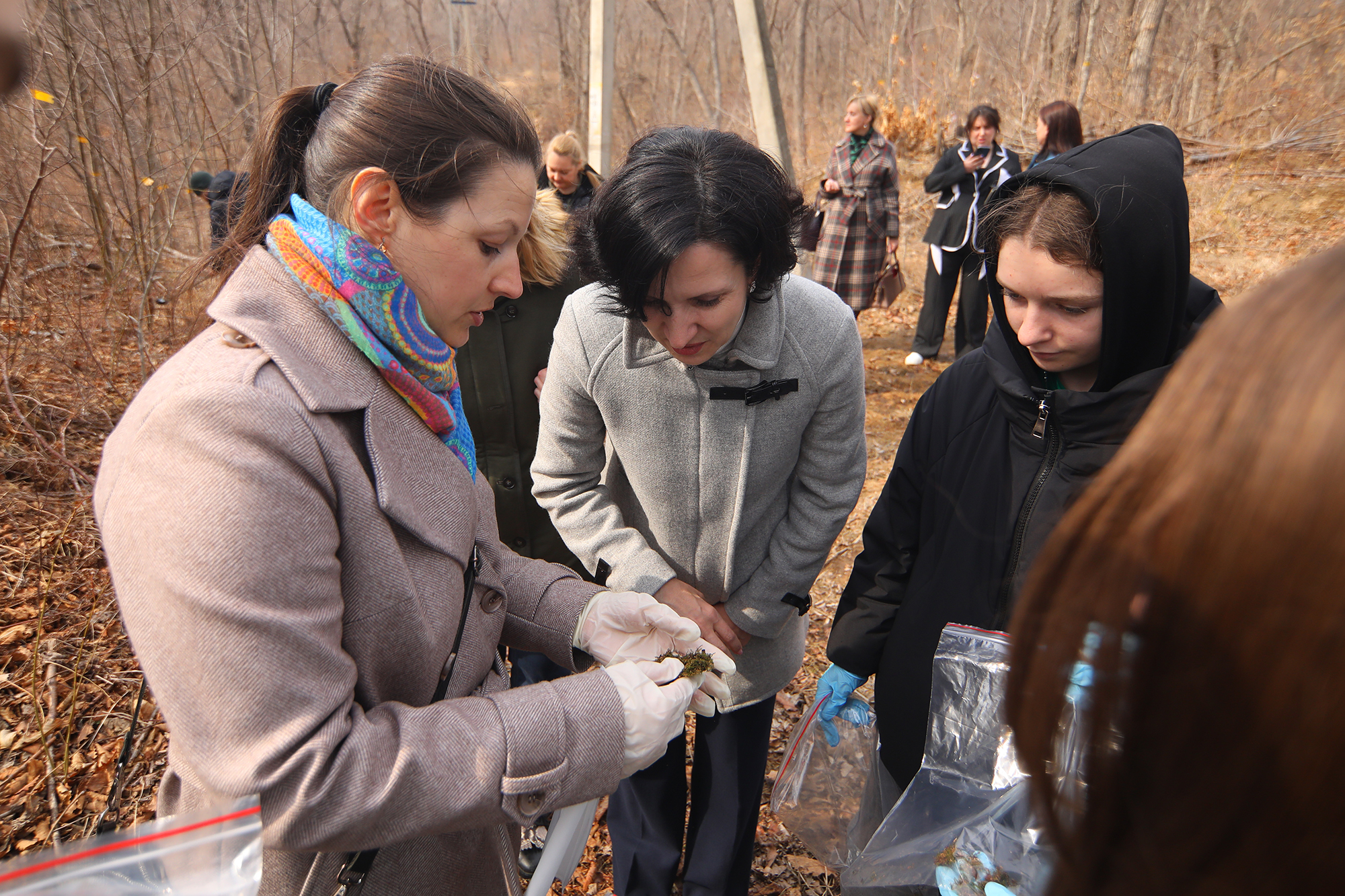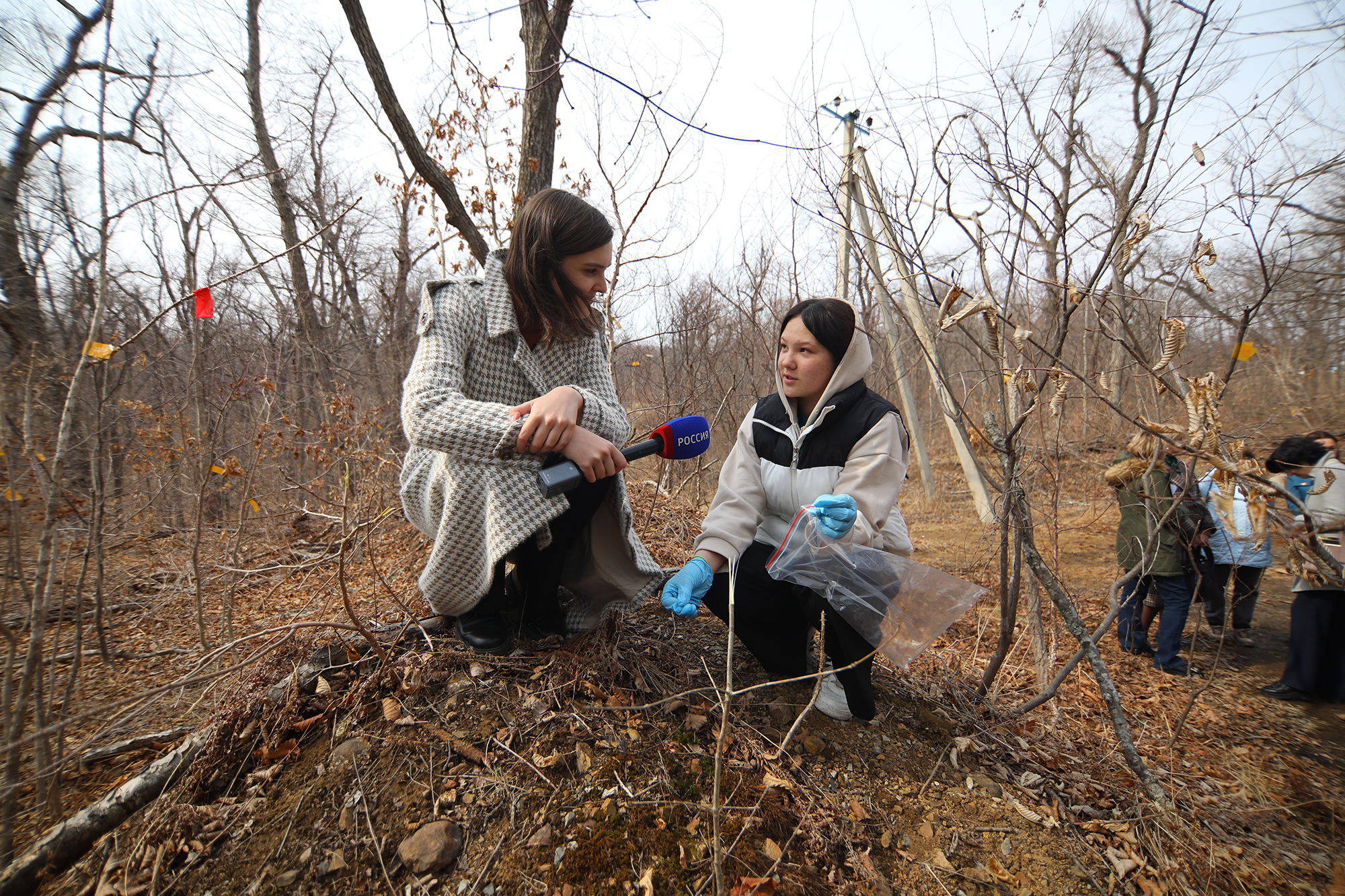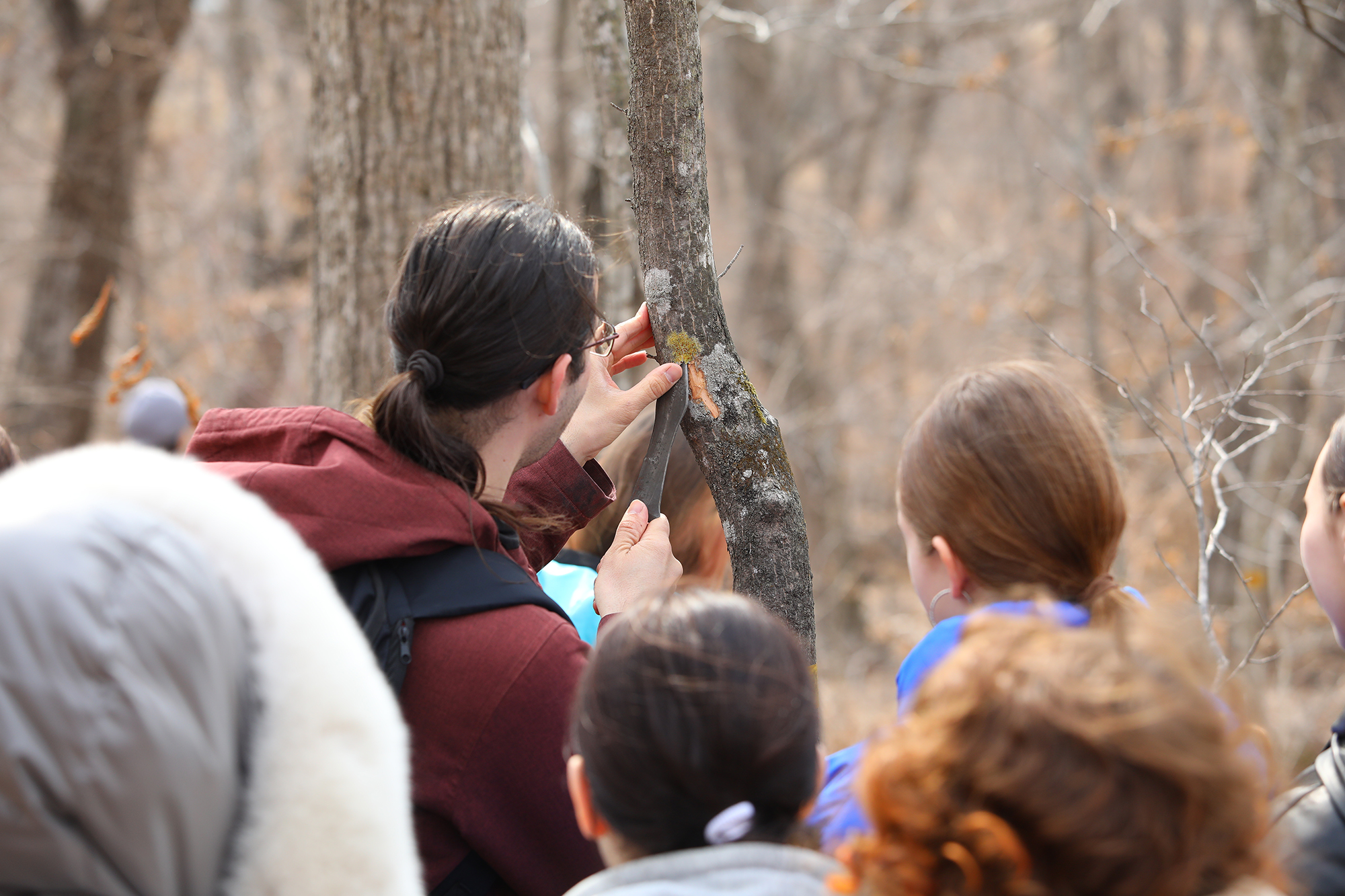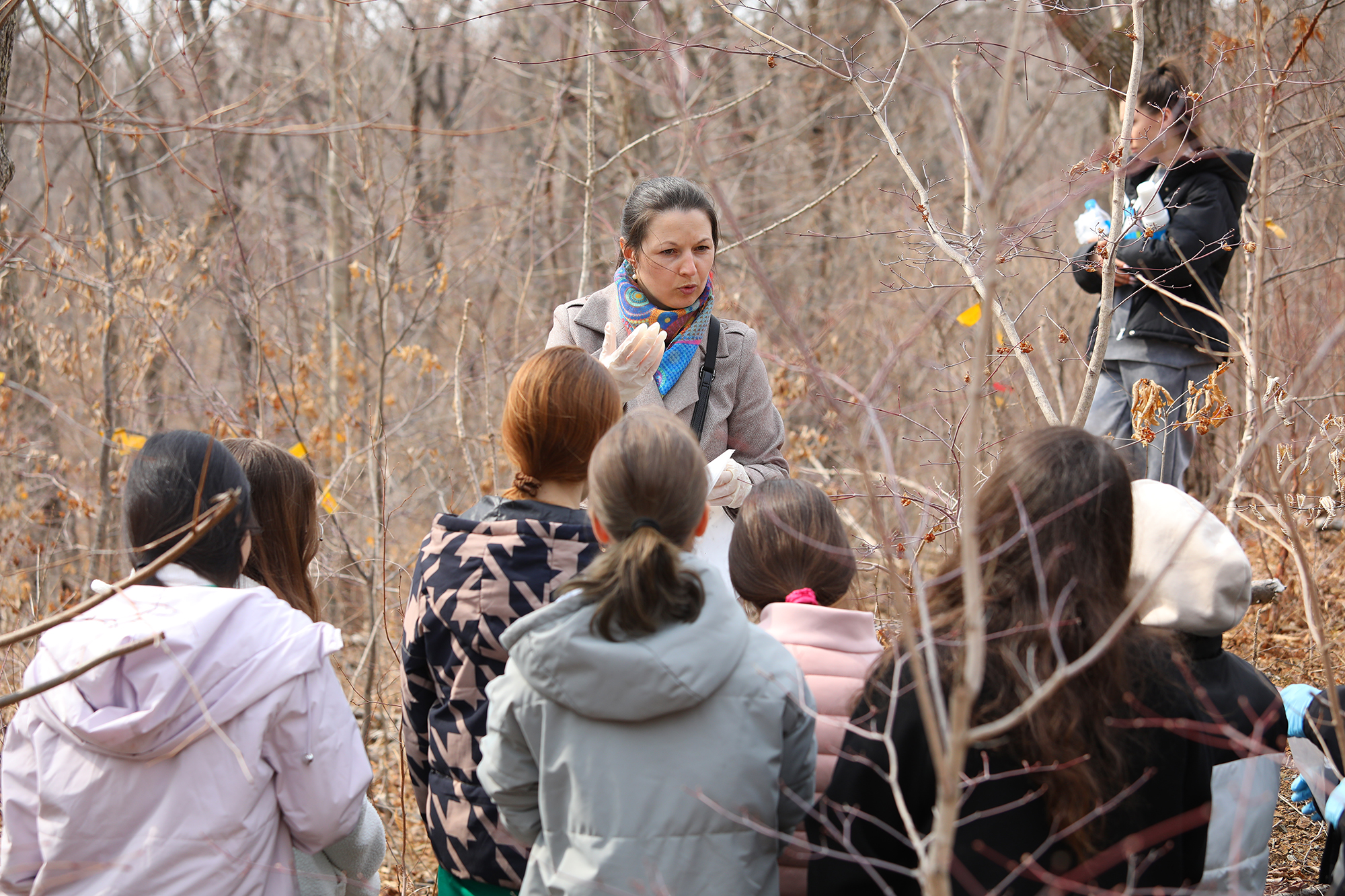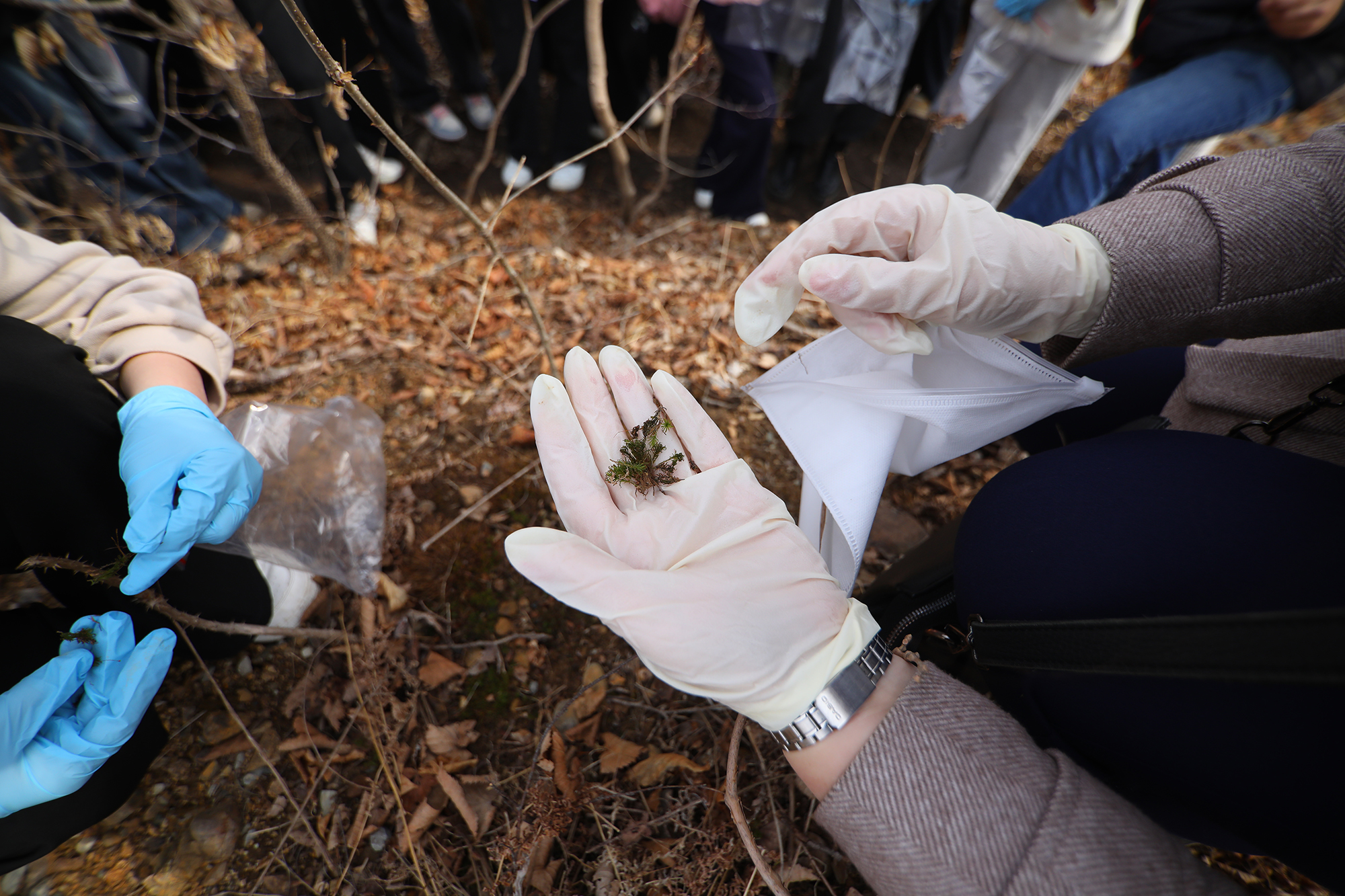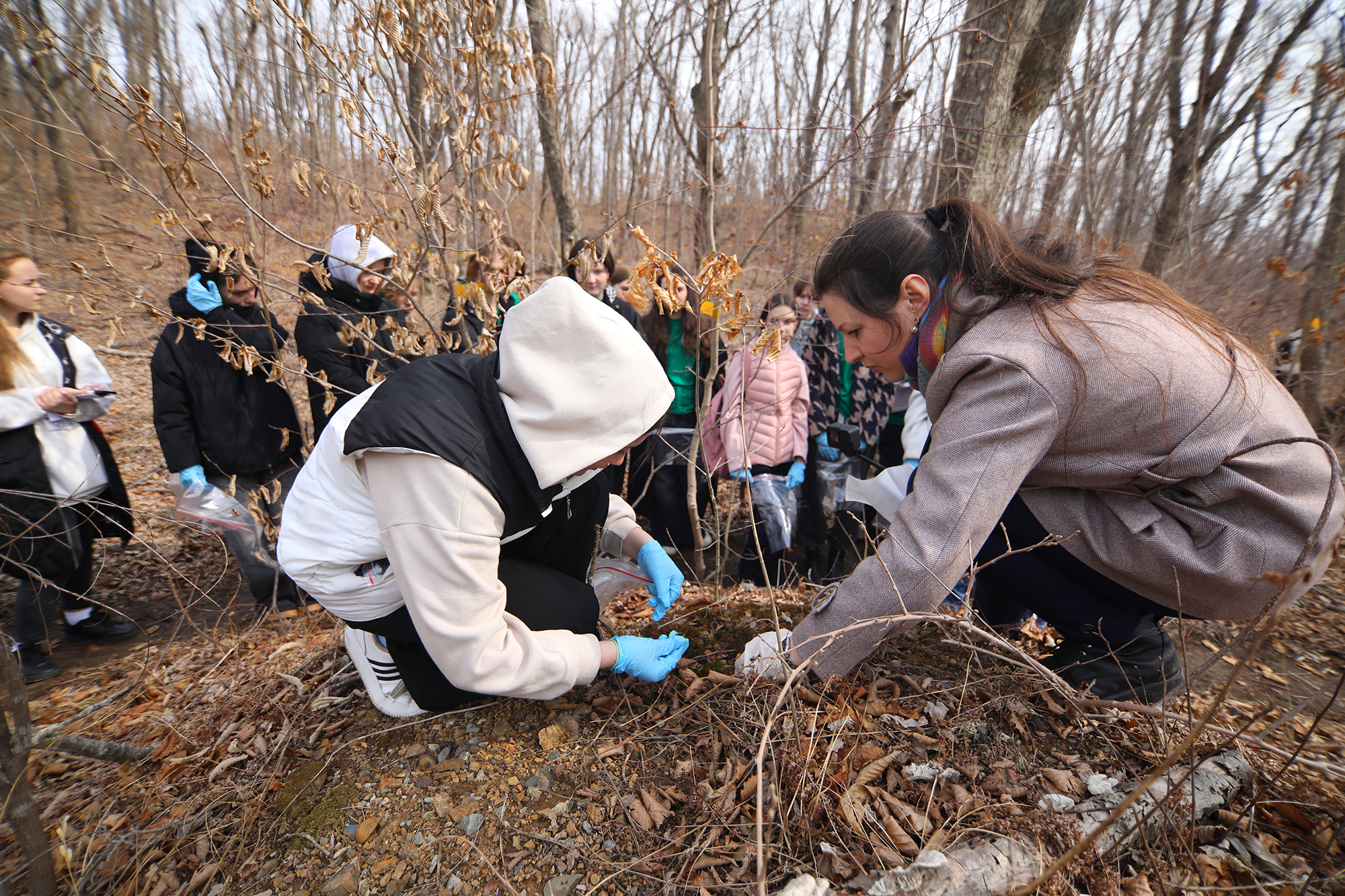JINR and FEFU carry out volunteer ecological monitoring as part of UN project
Media, 11 April 2025
Specialists of the Frank Laboratory of Neutron Physics at the Joint Institute for Nuclear Research together with students and scientists of Far Eastern Federal University (FEFU) are analysing air pollution in the area to assess its impact on the health of locals. Schoolchildren from the Sirius.Primorye centre took part in collecting mosses for future biomonitoring. The results of the study will be used as the basis for a strategy to improve the environmental situation in coastal cities and reflected in the UN Atmospheric Deposition of Heavy Metals atlas.
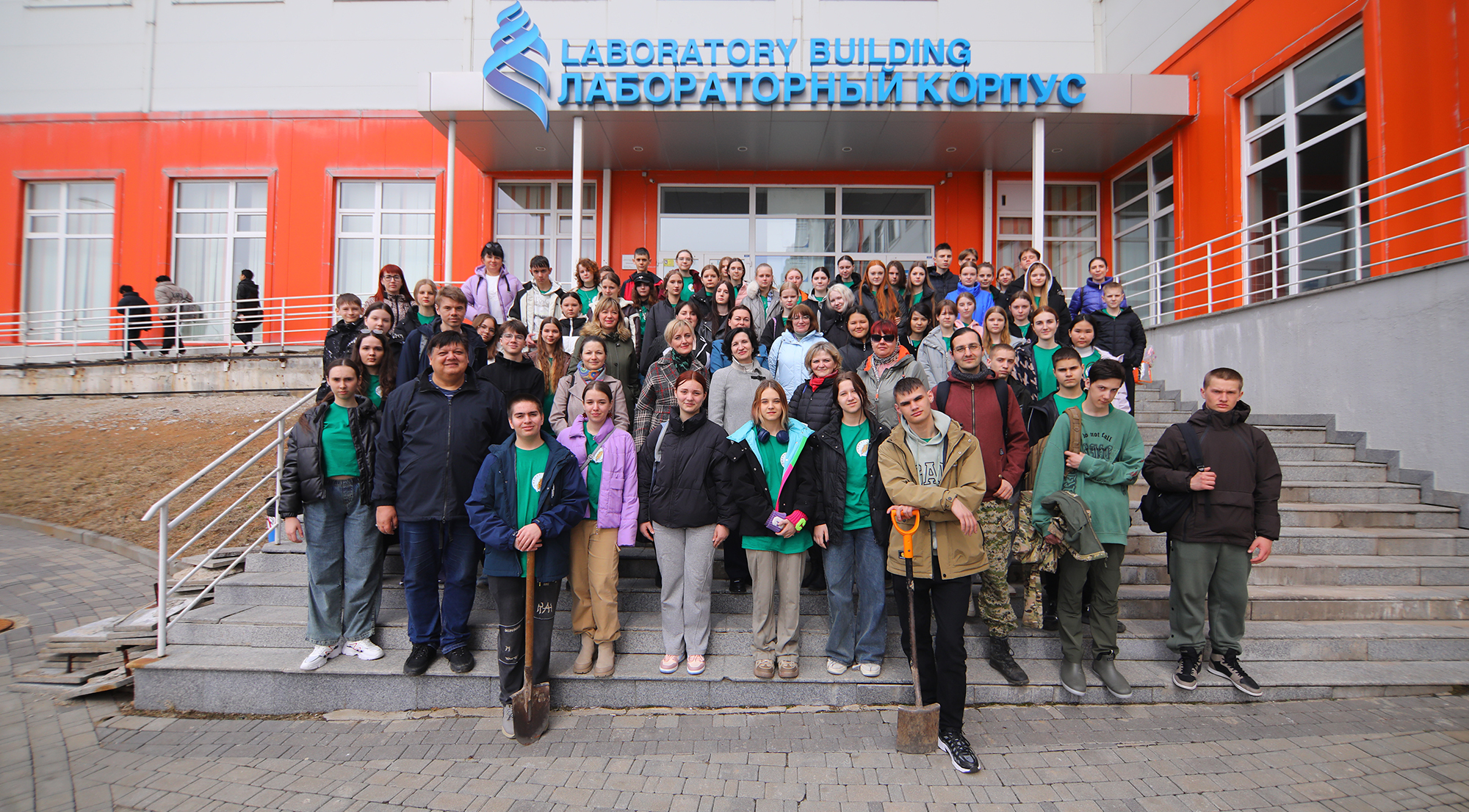 Photo © Far Eastern Federal University
Photo © Far Eastern Federal University
For the last 30 years, scientists from 36 countries have been working hard to solve the environmental problem. To measure air quality, researchers collect and process data obtained by analysing the composition of mosses used as biomonitors. Applying the neutron activation method, characterised by non-destructive nature and high sensitivity, will make it possible to identify up to 50 chemical elements in samples.
More than 60 students of the Sirius.Primorye regional centre, which specialises in discovering, supporting, and developing the skills and talents of children and youth, were involved in the work of researchers from JINR, FEFU, and the Far Eastern Branch of the Russian Academy of Sciences (FEB RAS). They visited the laboratories of the Institute of High Technologies and Advanced Materials and the FEFU Institute of the World Ocean, where the environmental research will be conducted, and collected moss samples as a biomonitor necessary for the atmospheric analysis. Other project participants, schoolchildren and teachers from all over Primorsky Krai (Russia), will collect moss samples on their territories.
All selected materials will be analysed by students and researchers at FEFU and FLNP JINR laboratories. Based on the results of the joint work, the data obtained will be presented in the international Atmospheric Deposition of Heavy Metals atlas, issued by the United Nations every 5 years since 1995.
“This week, an exciting project started to assess air pollution in Primorsky Krai using mosses as biomonitors and the analytical capabilities of FLNP. I am very glad that schoolchildren will take part in it. I hope this will be the first step into science for some of them,” Head of the FLNP JINR Sector of Neutron Activation Analysis and Applied Research Inga Zinicovscaia said.
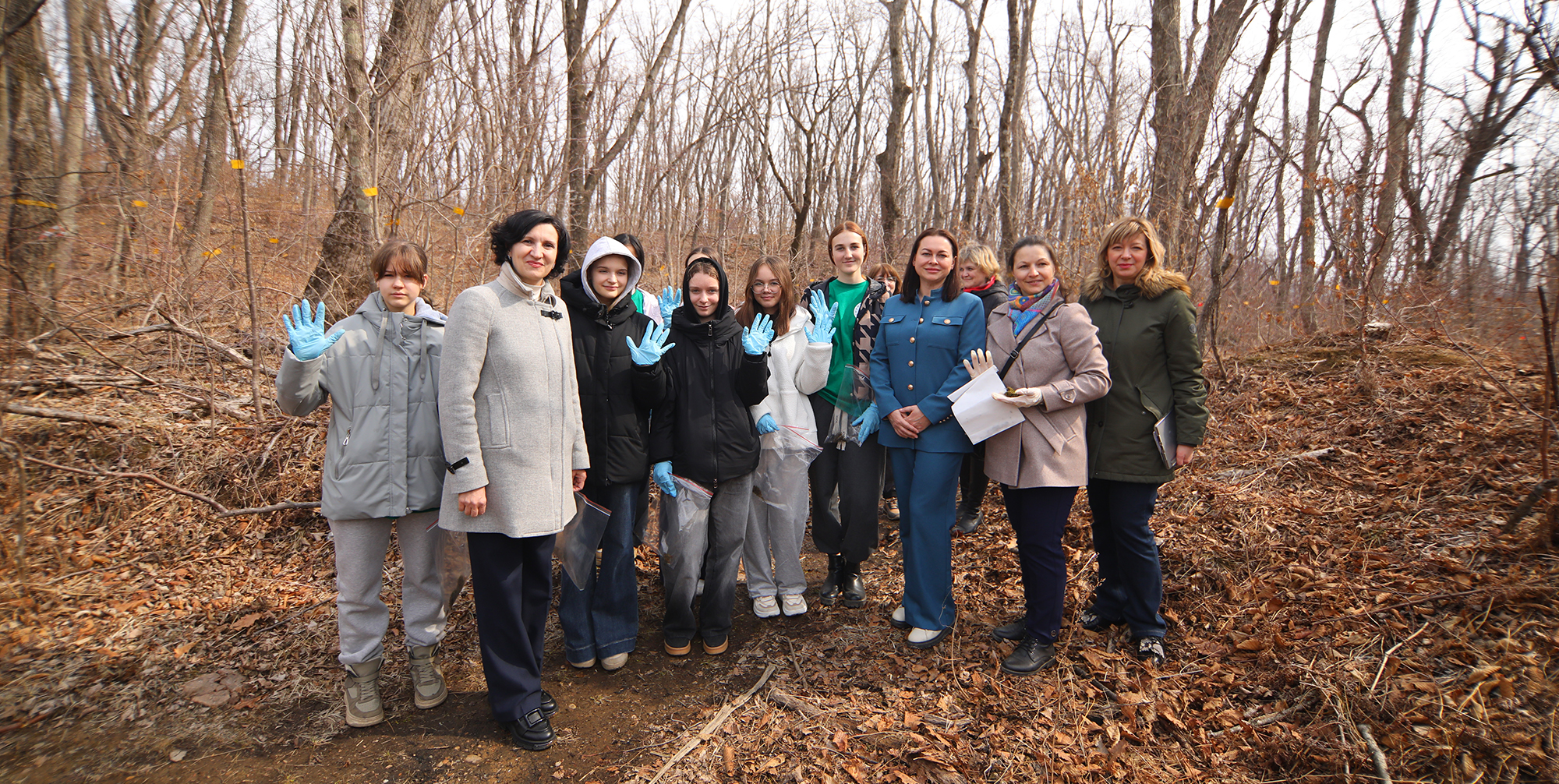 Photo © Far Eastern Federal University
Photo © Far Eastern Federal University
The citizen science environmental project in Primorsky Krai is being implemented as part of the strategic cooperation agreement between the Joint Institute, FEFU, FEB RAS, and Primorsky Krai, signed in 2022. The project is coordinated by the JINR Information Centre at FEFU and co-organized by the Ministry of Education and the Ministry of Forestry, Environmental Protection, Wildlife, and Natural Resources of Primorsky Krai in collaboration with the Sirius.Primorye regional centre.
